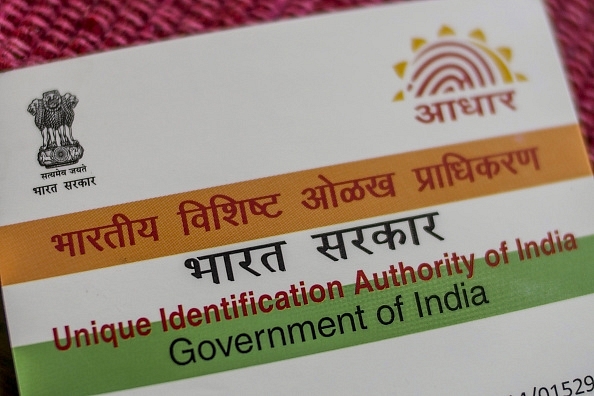Ideas
How To Rescue Aadhaar For Telecom And eWallets In Compliance With SC Ruling
- In a country that makes running a business as tough as possible, Aadhaar is a way of improving ease of doing business.
- We need to find ways to make Aadhaar relevant to business without compromising privacy and data integrity.

Aadhaar is too important a business enabler to be restricted only to the payment of government subsidies. (Photo Credit: Dhiraj Singh/Bloomberg via Getty Images)
After the Supreme Court verdict on Aadhaar, which invalidated the use of eKYC by private entities like banks and telecom companies for verifying customer identities using biometrics, many telcos are in a quandary. Some 500 million mobile customers, including half of them by Reliance Jio, have been enrolled this way, and many of them may face disconnection without going through a costly and time-consuming process of physical re-verification of ID and address proof documents.
Under the Supreme Court verdict delivered on 26 September, the use of Aadhaar biometrics is valid for PAN verification and the delivery of government services and subsidies, but not for private entities. This impacts mostly banks, e-wallet companies and mobile services providers. Additionally, those who used eKYC (the electronic way of adhering to know-your-customer norms without physical documents) to enrol new customers, may not only have to delete the old data, but also re-verify existing customers through the physical route.
While the government is mulling options on making this process smooth, there could be a simple way out: while the use of the biometric process is invalid for private entities, the use of the physical Aadhaar card itself is valid as ID and address proof, just as driving licences and PAN cards are.
While there is no escaping the additional costs involved, a smart way out would be to make the process as painless and low-cost as possible. Example: one could give those who used only eKYC processes a month’s time – or any reasonable time window – to email or physically submit scanned copies of their Aadhaar cards to the companies, which can then be matched with existing eKYC data before the latter is deleted. eKYC can be replaced with e-revalidation using scanned copies of Aadhaar.
Of course, we also need a new law which allows Aadhaar, without biometrics, as valid proof of KYC compliance in the same way a driver’s licence, a PAN card or passport can be used for the same.
One of the fortuitous changes made to the original Aadhaar idea proposed by Nandan Nilekani – that there will only be a number issued – was the decision to issue a physical card along with the number to each person. That godsend should be used to the hilt while we work out the contours of the new law on Aadhaar use by private entities.
Another possibility is to allow private entities to use Aadhaar biometrics without the UIDAI handing over the data to them. The ID validation will be given to them in the form of a code number that maps to the individual, but the individual’s personal details (photos, PAN number, address proof) have to be collected physically at a time of convenience. This way a service can be started on the basis of an authorisation code, but subject to subsequent validation through physical documentation, as in the past.
The simple point is that Aadhaar is too important a business enabler to be restricted only to the payment of government subsidies. In a country that makes running a business as tough as possible, Aadhaar is a way of improving ease of doing business. We need to find ways to make Aadhaar relevant to business without compromising privacy and data integrity.
Support Swarajya's 50 Ground Reports Project & Sponsor A Story
Every general election Swarajya does a 50 ground reports project.
Aimed only at serious readers and those who appreciate the nuances of political undercurrents, the project provides a sense of India's electoral landscape. As you know, these reports are produced after considerable investment of travel, time and effort on the ground.
This time too we've kicked off the project in style and have covered over 30 constituencies already. If you're someone who appreciates such work and have enjoyed our coverage please consider sponsoring a ground report for just Rs 2999 to Rs 19,999 - it goes a long way in helping us produce more quality reportage.
You can also back this project by becoming a subscriber for as little as Rs 999 - so do click on this links and choose a plan that suits you and back us.
Click below to contribute.
Latest